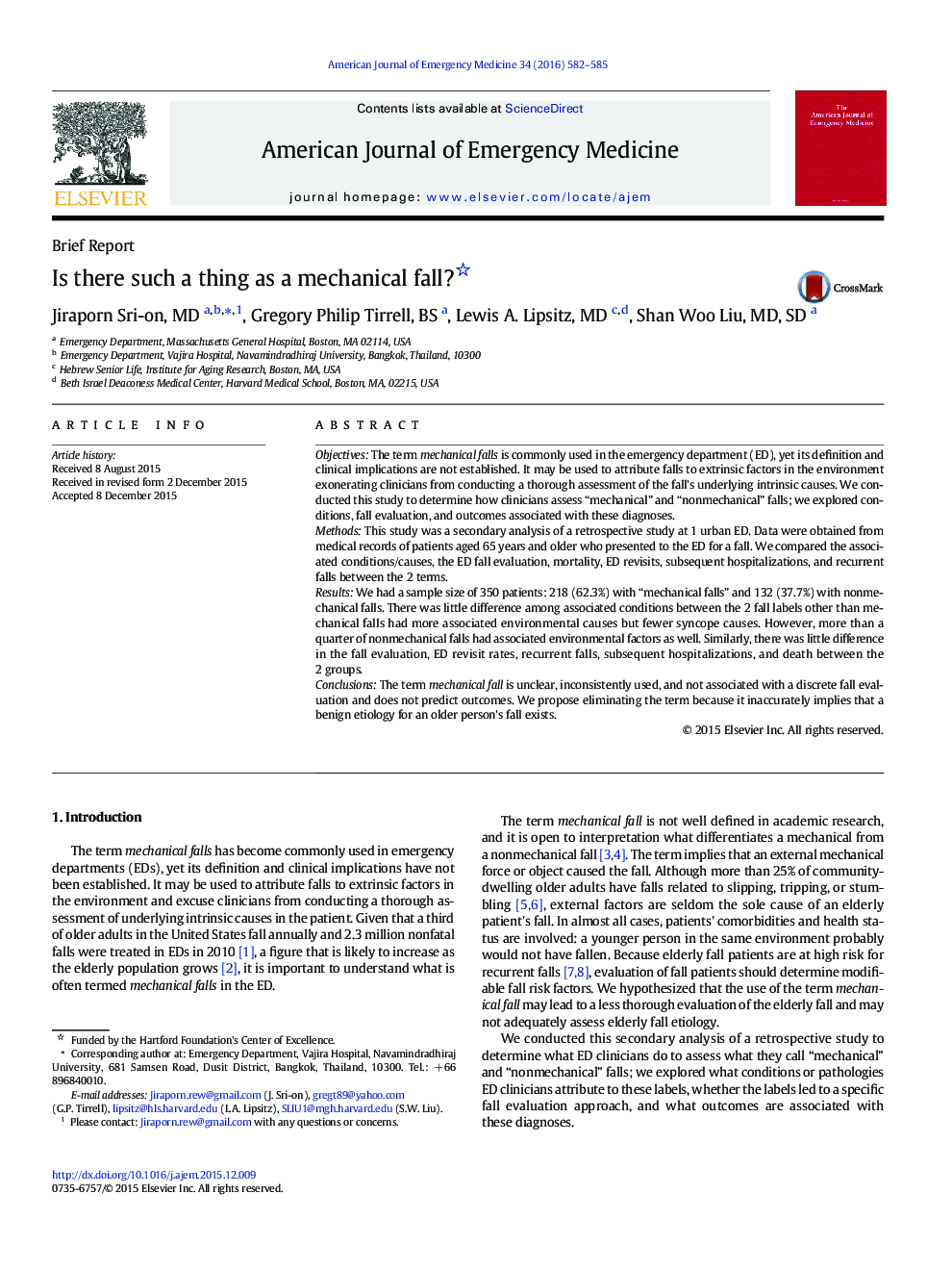| Article ID | Journal | Published Year | Pages | File Type |
|---|---|---|---|---|
| 6078943 | The American Journal of Emergency Medicine | 2016 | 4 Pages |
ObjectivesThe term mechanical falls is commonly used in the emergency department (ED), yet its definition and clinical implications are not established. It may be used to attribute falls to extrinsic factors in the environment exonerating clinicians from conducting a thorough assessment of the fall's underlying intrinsic causes. We conducted this study to determine how clinicians assess “mechanical” and “nonmechanical” falls; we explored conditions, fall evaluation, and outcomes associated with these diagnoses.MethodsThis study was a secondary analysis of a retrospective study at 1 urban ED. Data were obtained from medical records of patients aged 65 years and older who presented to the ED for a fall. We compared the associated conditions/causes, the ED fall evaluation, mortality, ED revisits, subsequent hospitalizations, and recurrent falls between the 2 terms.ResultsWe had a sample size of 350 patients: 218 (62.3%) with “mechanical falls” and 132 (37.7%) with nonmechanical falls. There was little difference among associated conditions between the 2 fall labels other than mechanical falls had more associated environmental causes but fewer syncope causes. However, more than a quarter of nonmechanical falls had associated environmental factors as well. Similarly, there was little difference in the fall evaluation, ED revisit rates, recurrent falls, subsequent hospitalizations, and death between the 2 groups.ConclusionsThe term mechanical fall is unclear, inconsistently used, and not associated with a discrete fall evaluation and does not predict outcomes. We propose eliminating the term because it inaccurately implies that a benign etiology for an older person's fall exists.
